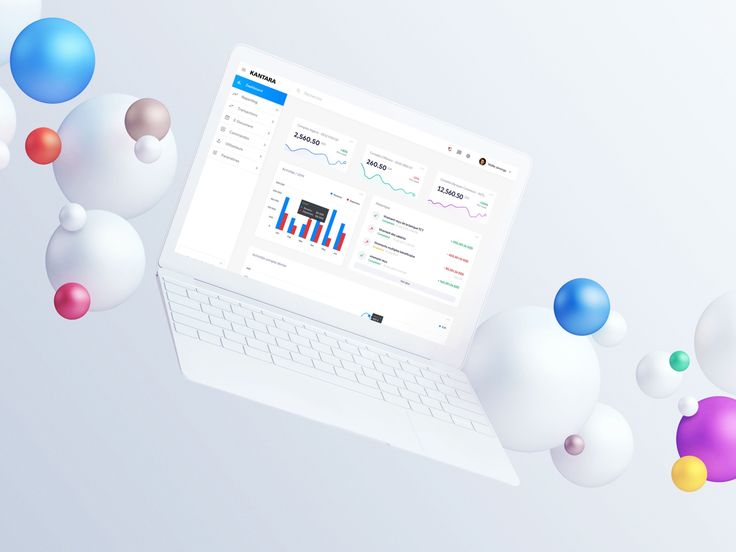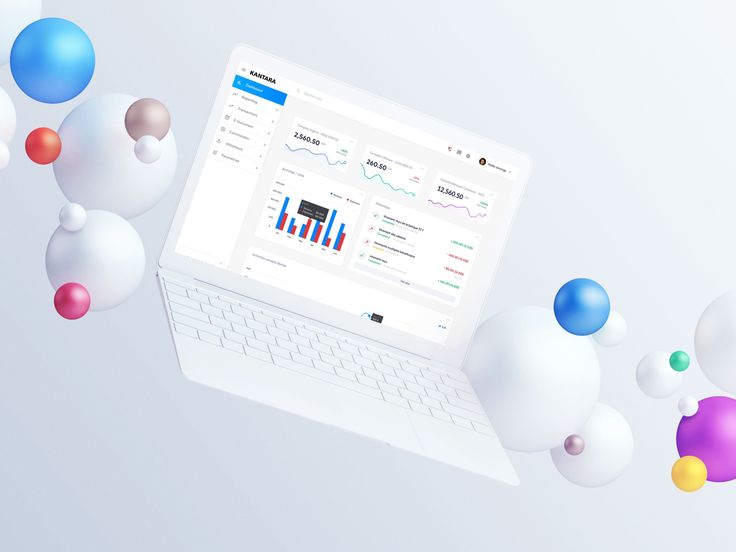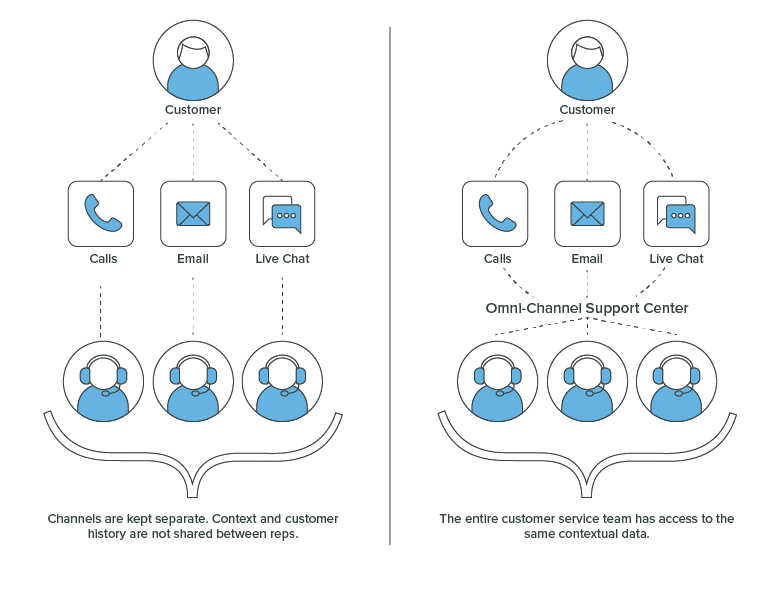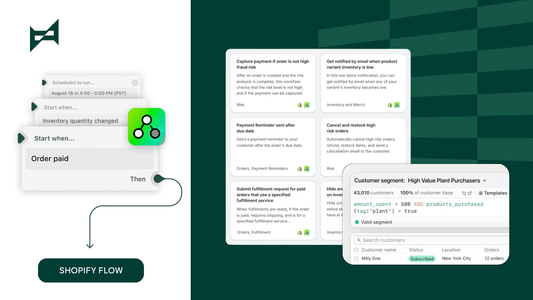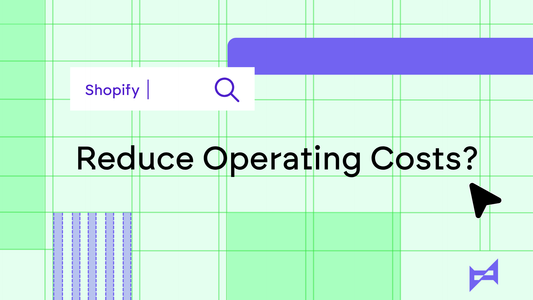Omnichannel vs Multichannel: What's the difference?
"Omnichannel" and "Multichannel" are perhaps two terms that have become too popular in today's business activities. Choosing between Omnichannel and Multichannel is not just a business decision, but also an important strategic step for any brand that wants to dominate the market. Nowadays, as customers are always seeking convenience and a seamless shopping experience, understanding and correctly applying these two models can be the key to unlocking the door to success for your business.
In this article, we will delve deeper into Omnichannel and Multichannel - two terms that seem to be a "hot trend" in the e-commerce industry, but not everyone fully understands their true significance and how they operate. What are the main similarities and differences between these two models? How do they impact the customer experience and overall business performance? And most importantly, which model should your business choose for sustainable development in the future?
The goal of this article is not only to provide the most comprehensive overview of Omnichannel and Multichannel but also to help you objectively assess the benefits and challenges each model presents. Thereby, you can determine the strategy that best aligns with your business objectives as well as the needs and desires of your target customers.
Basic definition
Before we dive into the analysis of Omnichannel and Multichannel, let's clarify some basic definitions. Meowcart firmly believes that mastering these concepts will help you understand them more deeply, thereby making the right decisions for your business.
What is Omnichannel?
When we talk about Omnichannel, we're referring to an "all-in-one" strategy - where every sales and customer interaction channel is seamlessly connected. Whether customers are shopping online via the website, mobile app, or directly in-store, they will receive a consistent and seamless shopping experience. The goal of Omnichannel is to create maximum convenience for customers, helping them interact with the brand in the easiest and most comfortable way, regardless of where they are or what medium they use.
Imagine you're looking to buy a smartwatch. You start by searching for information on the brand's website, then chat with a consultant via the mobile application to ask more about features. Finally, you decide to go to the store to try and make a purchase. Throughout this process, the information about the product, price, and offers you receive is consistent, and there are no interruptions. That is the power of Omnichannel.
What is Multichannel?
Multichannel, on the other hand, is when a business uses multiple channels to reach and serve customers but does not necessarily connect them together. Simply put, Multichannel can be seen as an approach where "each channel is an independent island." Customers can shop via the website, mobile application, or at a physical store, but the experience and information they receive in each channel may not be uniform. The main goal here is to expand presence across as many channels as possible to increase customer outreach opportunities.
Suppose you want to buy a book. You could find that book on the publisher's website, on an online sales app, or at a physical bookstore. However, the selling price, offers, and even information about the book may vary depending on the channel you choose to make the purchase. In Multichannel, although you have multiple options for shopping, the experience is not guaranteed to be consistent across channels.

Image: Vilas
In summary, the biggest difference between Omnichannel and Multichannel lies in the integration and seamlessness of the channels. With Omnichannel, everything is connected as a network, creating a unified shopping experience for customers. Meanwhile, Multichannel focuses on expanding presence across multiple channels without necessarily connecting them together.
Hopefully, with this explanation, you have a clearer understanding of these two core concepts. Don't forget, understanding them correctly and fully will be the first important step in determining the right strategy for your business.
Omnichannel and Multichannel comparation
Now, as we have grasped the basic knowledge about Omnichannel and Multichannel, let's delve a bit deeper and compare which of these giants is the best choice for your brand.
Channel integration
Omnichannel: Here, all sales and customer interaction channels are smoothly connected. This allows customers to switch between channels seamlessly, from online to offline and vice versa, without encountering any barriers. Imagine customers viewing a product on the website, then continuing their experience and shopping at a physical store without any disruption in product information or pricing.
Multichannel: Each channel operates as an independent island. Customers can interact with the brand through various channels but there isn't necessarily a tight linkage between them. This can sometimes create discrepancies in experience or information across channels.
Customer experience
Omnichannel: The main goal is to create a frictionless shopping experience for customers. Regardless of the channel they interact through, they receive convenience and a uniform experience. This not only enhances satisfaction but also encourages brand loyalty.
Multichannel: Customers may be pleased with access across multiple channels, but the lack of consistency among them can lead to confusion or dissatisfaction with the shopping experience.
Image: OvationCXM
Data and analytics
Omnichannel: Provides the ability to collect and analyze customer data comprehensively, helping businesses understand more about customer behavior and needs. This facilitates personalization of the shopping experience, thereby optimizing satisfaction and increasing conversion rates.
Multichannel: While also capable of collecting data from multiple channels, analysis can become complicated due to the lack of connection between channels. This can limit the ability to understand and serve customers in the best way.
From the comparison above, it is clear that Omnichannel offers superior benefits in terms of customer experience and data management. However, implementing an Omnichannel strategy is not always easy and requires significant investment in time, technology, and resources. Meanwhile, Multichannel may be suitable for businesses wanting to expand their presence across multiple channels without the need for too much connection between them.
Therefore, before deciding, it is necessary to carefully consider your resources, objectives, and customer base to choose the most appropriate strategy.
Advantages and disadvantages
After gaining a clear understanding of Omnichannel and Multichannel, as well as their basic comparison, you're likely curious about their specific advantages and disadvantages. In the following section, Meowcart will provide a more detailed analysis of these aspects, helping you make the most suitable decision for your business.
Advantages
Omnichannel:
- Unified customer experience: The tight integration among channels offers customers a seamless shopping experience, no matter which channel they use.
- Deep customer insights: Collecting and analyzing data across all channels allows businesses to gain a profound understanding of customer behavior and needs, enabling optimal personalization of the shopping experience.
- Enhanced satisfaction and loyalty: A convenient and consistent shopping experience increases customer satisfaction, encouraging repeat business and referrals.
Multichannel:
- Expanded presence: Businesses can reach customers across a variety of channels, enhancing sales opportunities and brand recognition.
- Flexibility in deployment: It's easy to add or adjust channels without the need for tight integration among them.
- Suitable for businesses with limited resources: Requires less investment in technology and management compared to Omnichannel.
Disadvantages
Omnichannel:
- Significant investment required: Seamless integration and management across channels demand considerable investment in technology, time, and human resources.
- Complexity in implementation: Establishing and maintaining an Omnichannel system can become complex, especially for large businesses with numerous sales and interaction channels.
Multichannel:
- Potential for inconsistent customer experience: The lack of linkage between channels may lead to discrepancies in experience and information, reducing customer satisfaction.
- Difficulty in data management: Effectively analyzing and utilizing customer data can be challenging due to the separation between channels.
This analysis reveals that each model has its unique set of advantages and disadvantages. Choosing between Omnichannel and Multichannel depends on your business objectives, resources, and importantly, the needs and desires of your target customers.
Impact on customer experience
We've covered a lot of ground regarding Omnichannel and Multichannel, but the most crucial issue, and what every business cares about, is their impact on customer experience. Customer experience is the deciding factor in a brand's success in today's era.
Impact of Omnichannel on customer experience
Omnichannel provides a limitless shopping experience where customers can interact with the brand seamlessly across all channels. This not only boosts satisfaction but also strengthens customer loyalty. When customers feel valued and can access the brand anytime, anywhere, they're more likely to return and recommend the brand to others.
Example: A customer starts searching for a product on the website, receives further consultation through a mobile app, and finally makes a purchase in a physical store without needing to re-enter information or explain their needs again. This consistent shopping experience makes the customer feel convenient and appreciates the brand's effort in providing services.

Impact of Multichannel on customer experience
With Multichannel, customers have access through various channels, increasing exposure and attracting customers from multiple directions. However, the lack of consistency among channels might only temporarily satisfy customers with the diversity of choices, failing to achieve long-term engagement due to an inconsistent experience.
Example: A customer shops online and then visits a store to return/exchange the product but has to spend additional time explaining and proving purchase information. In this case, the lack of seamlessness between online and offline can inconvenience the customer.
In conclusion, the choice between Omnichannel and Multichannel significantly impacts customer experience. Omnichannel elevates the customer experience to a new level by creating convenience and seamlessness, while Multichannel offers flexibility and a variety of channels but may not guarantee consistency in experience. Therefore, when deciding on a strategy for your business, carefully consider its impact on customer experience and satisfaction because ultimately, happy customers are the key to long-term success for your brand.
